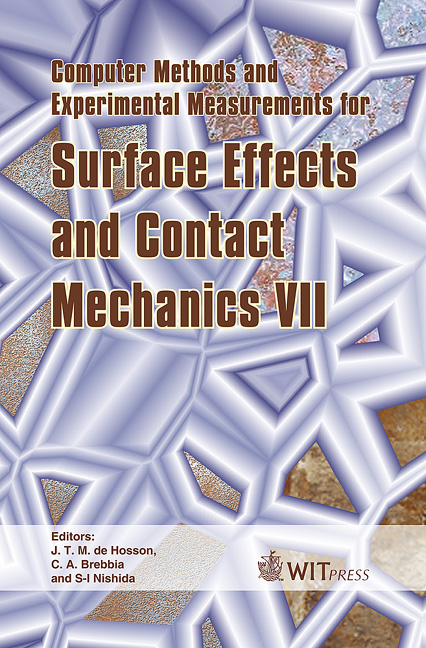3D Photoelasticity And Numerical Analysis Of A Cylinder/half-space Contact Problem
Price
Free (open access)
Transaction
Volume
49
Pages
10
Published
2005
Size
912 kb
Paper DOI
10.2495/SECM050171
Copyright
WIT Press
Author(s)
A. Bilek, J.C. Dupré, A. Ouibrahima & F. Bremand
Abstract
The three-dimensional analysis of contact mechanics is still not an easy task. Frozen stress techniques in photoelasticity have been used very much to obtain the stress fields developed in the models. Although the means to avoid the introduction of residual stresses are well established, these techniques remain time consuming. Owing to the recent developments in technology of image recording and processing, new non-destructive methods have been developed to circumvent these difficulties. In this paper, a new non-destructive method of optical slicing of a photoelastic model was used to analyse stresses developed in a half space by a rigid cylinder. The basic idea is to use the properties of polarization of the scattered light. The slice is isolated in the model by two laser sheets. A speckle pattern due to the interference of the light beams of each section in the direction perpendicular to these plans can be observed. The possibility of interference depends on the birefringence of the isolated slice. A high resolution CCD camera is used to take pictures of the two illuminated sections. The stress field can then be analyzed using software. This technique allows us to visualise photoelastic fringes at any given position within the model. Comparisons are made between experimental fringes and calculated fringes obtained by a numerical analysis using \“Castem” package. The obtained results show close agreement between numerical predictions and the experimental results. Keywords: scattered light, optical slicing, photoelasticity, stress freezing, contact, non-destructive method.
Keywords
scattered light, optical slicing, photoelasticity, stress freezing, contact, non-destructive method.





